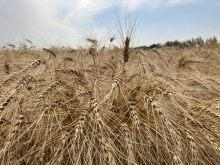MarketsFarm — As the holidays approach and 2021 comes to a close, there was little trading activity on feed grain markets, according to Allen Pirness, senior trader at Market Place Commodities in Lethbridge.
“The offers are still quite a bit higher than the bids. But there hasn’t been a lot of appetite right at the moment for anyone to pay up,” he said. “They’re just buying (grain) as they need it.”
Corn imports from the U.S. have reduced demand for depleted Alberta feed wheat and barley, with prices for both declining in turn.
Read Also

U.S. livestock: Cattle futures end higher on cold weather, rising cash prices
Chicago | Reuters – Chicago Mercantile Exchange (CME) cattle futures closed higher on Thursday for the third straight session, as…
The high-delivered bid for Alberta feed barley is $9.80 per bushel, 11 cents less than the week before, according to Prairie Ag Hotwire data. As for Alberta feed wheat, the high-delivered bid had declined 14 cents from the past week, to $12.79/bu. Both prices are higher than last year at this time — $3.70 and $5.31/bu. higher respectively.
“We’re seeing corn take more of the driver’s seat role in the feed grain complex. Pretty much every feedlot is feeding corn now. It really kills the demand for wheat and barley,” Pirness said. “We’ll see (plenty of corn) at least through the summer, maybe even into next crop year…It’s a pretty significant switch that has happened.”
Corn, he said, is currently going for about $410 per tonne ($10.41/bu.) on the spot market.
Pirness said 2021 was a redux of 2002, another year of drought on the Prairies and increased corn imports — and supply chain issues this year provided another set of challenges for Western Canada’s feed grain industry
Backlogs at transloaders in southern Alberta are starting to be cleared up in time for 2022, he added.
“We’re hoping for better performance in 2022 by them so we can deliver feed in a timely manner to feedlots. It looks very promising.”
— Adam Peleshaty reports for MarketsFarm from Stonewall, Man.
















